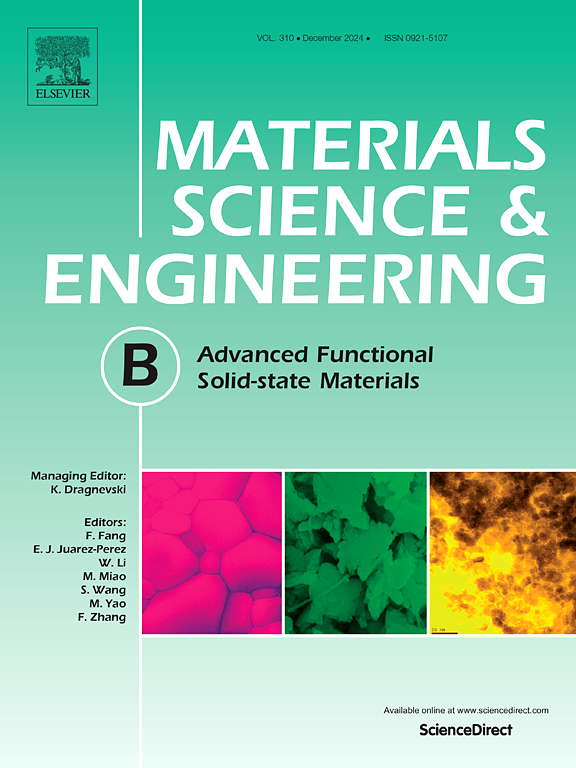YSZ型三层结构固体氧化物电池的合理设计
IF 3.9
3区 材料科学
Q2 MATERIALS SCIENCE, MULTIDISCIPLINARY
引用次数: 0
摘要
固体氧化物电池(soc)在高效发电和制氢方面有着巨大的前景,其性能受到电池结构的强烈影响。本文提出了一种合理设计的钇稳定氧化锆(YSZ)三层结构soc,将多孔|致密|多孔支架与优化的催化剂浸渍技术相结合。对称细胞分析表明,多孔支架的孔隙结构决定了催化剂的最佳负载,而支架的厚度对于最小化气体扩散阻力至关重要。将Ce0.9Gd0.1O2-δ (CGO)和La0.6Sr0.4CoO3-δ (LSC)依次浸渍到YSZ支架中,在850℃和750℃下,空气电极的极化电阻分别低至0.009 Ω cm2和0.025 Ω cm2。在蒸汽电解过程中,在−0.75 A cm−2和−1.00 A cm−2的高电流密度下,电解质支撑的单体电池可以稳定运行160 h。这些结果突出了三层结构制造和催化剂浸渍作为推进SOC技术的有效策略的潜力。本文章由计算机程序翻译,如有差异,请以英文原文为准。

Rational design of YSZ trilayer-structured solid oxide cells for power generation and hydrogen production
Solid oxide cells (SOCs) hold great promise for efficient power generation and hydrogen production, with performance strongly influenced by cell architecture. Herein, we present a rational design of yttria-stabilized zirconia (YSZ) trilayer-structured SOCs, combining porous|dense|porous scaffold engineered with optimized catalyst impregnation techniques. Symmetrical cell analyses reveal that the pore structure of the porous scaffold governs the optimal catalyst loading, while scaffold thickness is critical for minimizing gas diffusion resistance. Sequential impregnation of Ce0.9Gd0.1O2-δ (CGO) and La0.6Sr0.4CoO3-δ (LSC) into the YSZ scaffold produces air electrodes with polarization resistances as low as 0.009 Ω cm2 at 850 °C and 0.025 Ω cm2 at 750 °C. During steam electrolysis, the electrolyte-supported single cells achieve stable operation for 160 h under high current densities of −0.75 A cm−2 and −1.00 A cm−2. These results highlight the potential of trilayer-structure fabrication and catalyst impregnation as effective strategies for advancing the SOC technology.
求助全文
通过发布文献求助,成功后即可免费获取论文全文。
去求助
来源期刊

Materials Science and Engineering: B
工程技术-材料科学:综合
CiteScore
5.60
自引率
2.80%
发文量
481
审稿时长
3.5 months
期刊介绍:
The journal provides an international medium for the publication of theoretical and experimental studies and reviews related to the electronic, electrochemical, ionic, magnetic, optical, and biosensing properties of solid state materials in bulk, thin film and particulate forms. Papers dealing with synthesis, processing, characterization, structure, physical properties and computational aspects of nano-crystalline, crystalline, amorphous and glassy forms of ceramics, semiconductors, layered insertion compounds, low-dimensional compounds and systems, fast-ion conductors, polymers and dielectrics are viewed as suitable for publication. Articles focused on nano-structured aspects of these advanced solid-state materials will also be considered suitable.
 求助内容:
求助内容: 应助结果提醒方式:
应助结果提醒方式:


